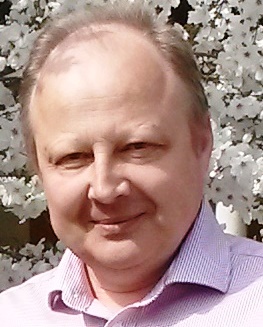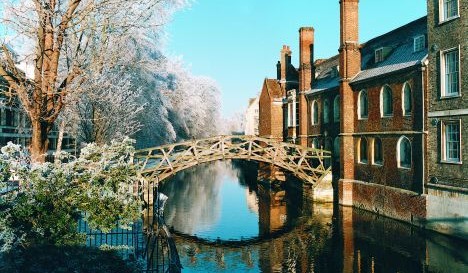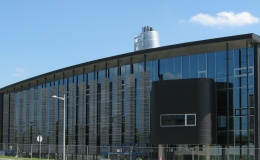 Professor Eugene Terentjev
Professor Eugene Terentjev
Jump down to: Teaching and lecture notes
Former students and postdocs
Other links

Research Activities
Representative research topics that I have worked on over the years are listed below. I worked on a variety of topics in a broad area of soft condensed matter and biological physics.
The list is long, and my interests were changing depending on the current fashion, unexpected discovery, external collaboration, funding, or just a chance idea.
My updated publications are accessible on the Thomson-Reuters (Web of Knowledge) ResearcherID link, or on Orcid link.
With late Mark Warner, we have written a substantial monograph
"Liquid Crystal Elastomers". From the book's website you could download the first Chapter, called "The Bird's Eye View", which is an overview of the new physics arising in this field; the Appendices of
the paperback edition are also downloadable there.
With David Weitz we have put together a volume: The Oxford Handbook of Soft Condensed Matter (here, I am afraid, the OUP didn't let us upload a PDF).
Liquid crystalline elastomers are crosslinked or thermoplastic rubbery networks of polymer chains that possess a spontaneous orientational order. The resulting effects are quite unique:
from the thermal and photo-actuation (artificial muscles), to the soft elasticity, to the quenched
random disorder and complicated dynamics - the
liquid crystal elastomers have a real claim to
be regarded as a new state of matter!...
Our group has a long history of theoretical and experimental studies
in this field and also a unique combination of capacities:
the chemical synthesis facility, the advanced dynamic-mechanical and optical
experimental base and, most importantly, the full synergy between theory, physical experiment and the chemistry. The first big ERC grant has supported this research in 2018-23, and we have just been awarded another similar ERC grant for 2025-2031... Watch this space!
Other 'favourite topics', that I am now forced to work much less in (because of those big projects above) :
Molecular motors and sensors. This is the 'biophysics proper'. We did some work, and are still active in the theory of the ATP-fuelled rotary molecular motor (like F1 ATPase); this is in contrast to the pmf-driven rotary motors (like F0 ATPase or flagellar motor). Mechanosensing of the 2nd kind, that is, generating a response to the stiffness of cell environment (as opposed to the '1st kind' responding directly to applied force/pressure) is a very active area of our research, both in theory and experiment. Understanding the sensor and the subsequent signaling pathways is a direct route to model cell morphology and the transition to active motion, which is the longer-term aim here...
See a University press-release.
Mechanics of cells and tissues. This area is being "revived" with the rise of Physics of Medicine (see above). We look theoretically at the mechanisms of mechano-sensitivity: how the cells and confluent tissues respond to changes in mechanical characteristics of their environment. Recent experimental projects examined how fascia and other ligamentous tissue respond to strain: to maintain homeostasis there has to be an active recovery exerting a force higher than the one originally applied - but how is not yet clear.
Filaments and their networks. This is a broad area, inspired by biological filaments (e.g. amyloid fibrils, actin, or microtubules - but equally carbon nanotubes), which uses our expertise in polymer physics. Here the work is mostly theoretical, in collaboration with
single-molecule and cell-mechanics experiments in the BSS group. What is the kinetics of
filament growth? How is the buckling compression force depends on filament structure? How to
understand the ratchet nature of cell deformation from the underlying actin growth/buckling
dynamics? These are the kind of questions we were working on recently.
Chirality and Biopolymers is an old area of my interest. Again,
combining the theory and experiment (dynamic-mechanical and optical), we are trying to establish the
effects of molecular chirality and stereo-specific interactions (on the level of primary/secondary structure)
on the macroscopic response of polymers and their networks or aggregates structures.
Several possible PhD projects are available at any given time, in all of the above research
areas and in all three directions (theory, experiment and chemical synthesis),
for the start in October (check the Cavendish rules for
PhD application,
but contact me first for preliminary discussions). Remember, the PhD applications need to be submitted no later than December-January (or earlier, if funding is not clear).

Links to some relevant Cavendish pages

Just in case you are wondering - we still live at 18 Hurrell Road, Cambridge CB4 3RH
This is now a location of Arbury Osteopathic Clinic, run by Helen
And also the address of Cambridge Smart Plastics
 Professor Eugene Terentjev
Professor Eugene Terentjev  Professor Eugene Terentjev
Professor Eugene Terentjev 





